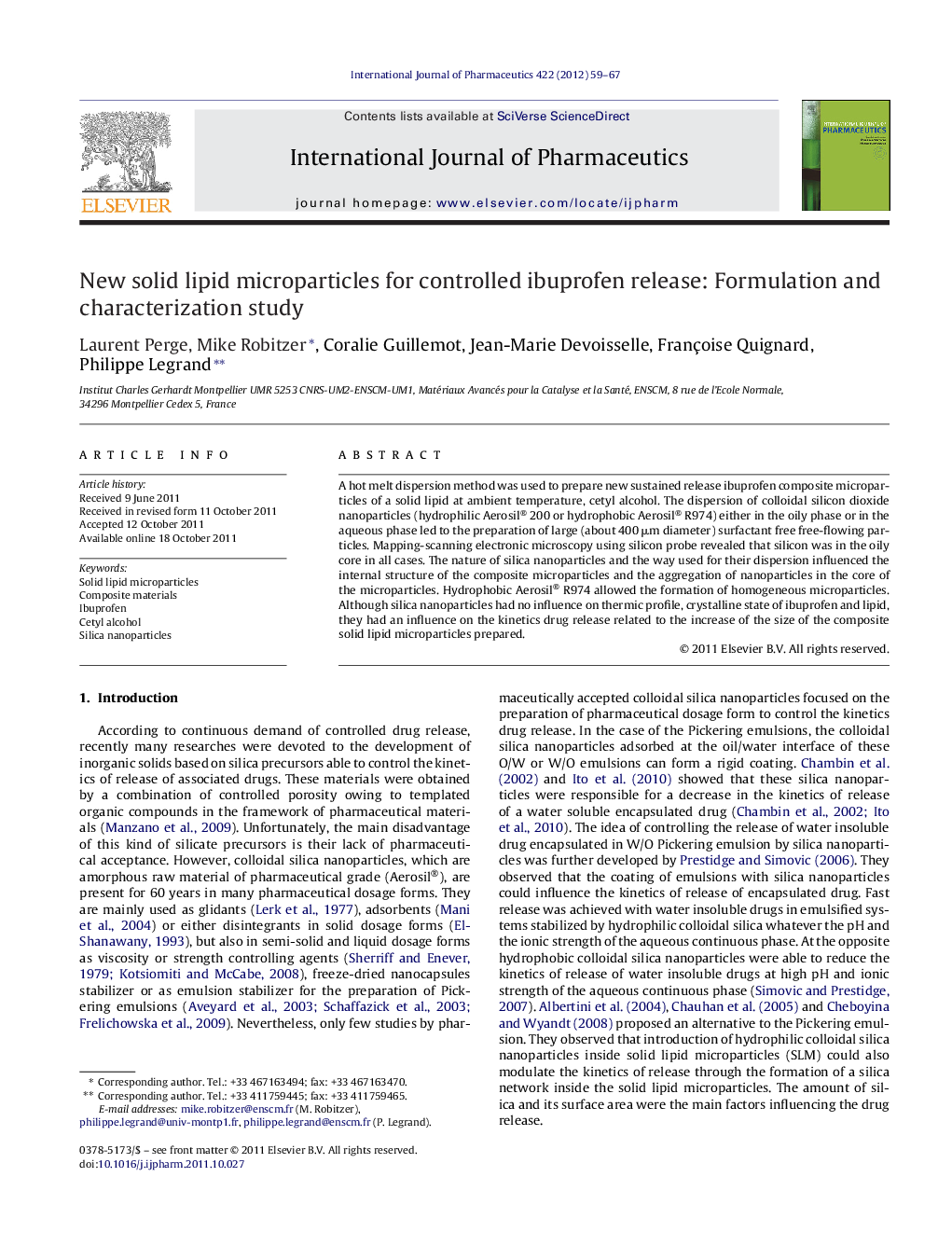| Article ID | Journal | Published Year | Pages | File Type |
|---|---|---|---|---|
| 2503084 | International Journal of Pharmaceutics | 2012 | 9 Pages |
A hot melt dispersion method was used to prepare new sustained release ibuprofen composite microparticles of a solid lipid at ambient temperature, cetyl alcohol. The dispersion of colloidal silicon dioxide nanoparticles (hydrophilic Aerosil® 200 or hydrophobic Aerosil® R974) either in the oily phase or in the aqueous phase led to the preparation of large (about 400 μm diameter) surfactant free free-flowing particles. Mapping-scanning electronic microscopy using silicon probe revealed that silicon was in the oily core in all cases. The nature of silica nanoparticles and the way used for their dispersion influenced the internal structure of the composite microparticles and the aggregation of nanoparticles in the core of the microparticles. Hydrophobic Aerosil® R974 allowed the formation of homogeneous microparticles. Although silica nanoparticles had no influence on thermic profile, crystalline state of ibuprofen and lipid, they had an influence on the kinetics drug release related to the increase of the size of the composite solid lipid microparticles prepared.
Graphical abstractFigure optionsDownload full-size imageDownload as PowerPoint slide
